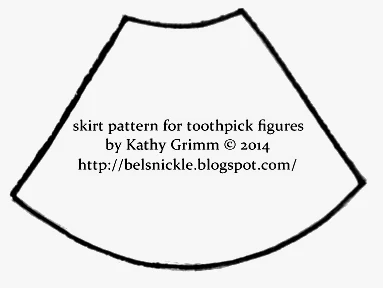Shells are often used in Christian churches to symbolize baptism. This is because in ancient times Christians were often baptized along side river banks, near oceans, lakes etc... Shells were readily picked up and filled with water to splash the person or persons who were being baptized. Both dunking and sprinkling were done depending on the age or fragility of the person being baptized at the time. There were no arguments concerning technique, only the point of understanding the act and the meaning behind it was considered important. Shells over the passing of time became so closely associated with the sacrament that they have been used in art and as Chrismons ever since.
 |
| All you will need for this craft is a few shells with holes in them, glass beads and a fine strong wire. I twisted a long piece of wire through the hole in each shell and then strung a variety of gold and yellow beads, including some small glass fish, onto the wire hanger. These tear drop Chrismon ornaments make nice additions to your congregation's ornament collection not only because they add variety and texture to the mix but also because very little parish members can help put them together. |
The liturgy of baptism in the Catholic, Eastern Orthodox, Lutheran, Anglican, and Methodist traditions makes clear reference to baptism as not only a symbolic burial and resurrection, but an actual supernatural transformation, one that draws parallels to the experience of Noah and the passage of the Israelites through the Red Sea divided by Moses. Thus, baptism is literally and symbolically not only cleansing, but also dying and rising again with Christ. Catholics believe that baptism is necessary for the cleansing of the taint of original sin, and for that reason infant baptism is a common practice. The Eastern Churches (Eastern Orthodox Church and Oriental Orthodoxy) also baptize infants on the basis of texts, such as Matthew 19:14, which are interpreted as supporting full Church membership for children. In these traditions, baptism is immediately followed by Chrismation and Communion at the next Divine Liturgy, regardless of age. Orthodox likewise believe that baptism removes what they call the ancestral sin of Adam. Anglicans believe that Baptism is also the entry into the Church and therefore allows them access to all rights and responsibilities as full members, including the privilege to receive Holy Communion. Most Methodists and Anglicans agree that it also cleanses the taint of what in the West is called original sin, in the East ancestral sin.
Eastern Orthodox Christians usually insist on complete threefold immersion as both a symbol of death and rebirth into Christ, and as a washing away of sin. Latin Rite Catholics generally baptize by affusion (pouring); Eastern Catholics usually by submersion, or at least partial immersion. However, submersion is gaining in popularity within the Latin Catholic Church. In newer church sanctuaries, the baptismal font may be designed to expressly allow for baptism by immersion. Anglicans baptize by submersion, immersion, affusion or sprinkling.
According to a tradition, evidence of which can be traced back to at latest about the year 200, sponsors or godparents are present at baptism and vow to uphold the Christian education and life of the baptized.
Baptists argue that the Greek word βαπτίζω originally meant "to immerse". They interpret some Biblical passages concerning baptism as requiring submersion of the body in water. They also state that only submersion reflects the symbolic significance of being "buried" and "raised" with Christ. Baptist Churches baptize in the name of the Trinity—the Father, the Son, and the Holy Spirit. However, they do not believe that baptism is necessary for salvation; but rather that it is an act of Christian obedience.
Some "Full Gospel" charismatic churches such as Oneness Pentecostals baptize only in the name of Jesus Christ, citing Peter's preaching baptism in the name of Jesus as their authority.
They also point to several historical sources that maintain that the early church always baptized in the name of the Lord Jesus until development of the Trinity Doctrine in the 2nd century.
More About Shell Art for Advent:
















































